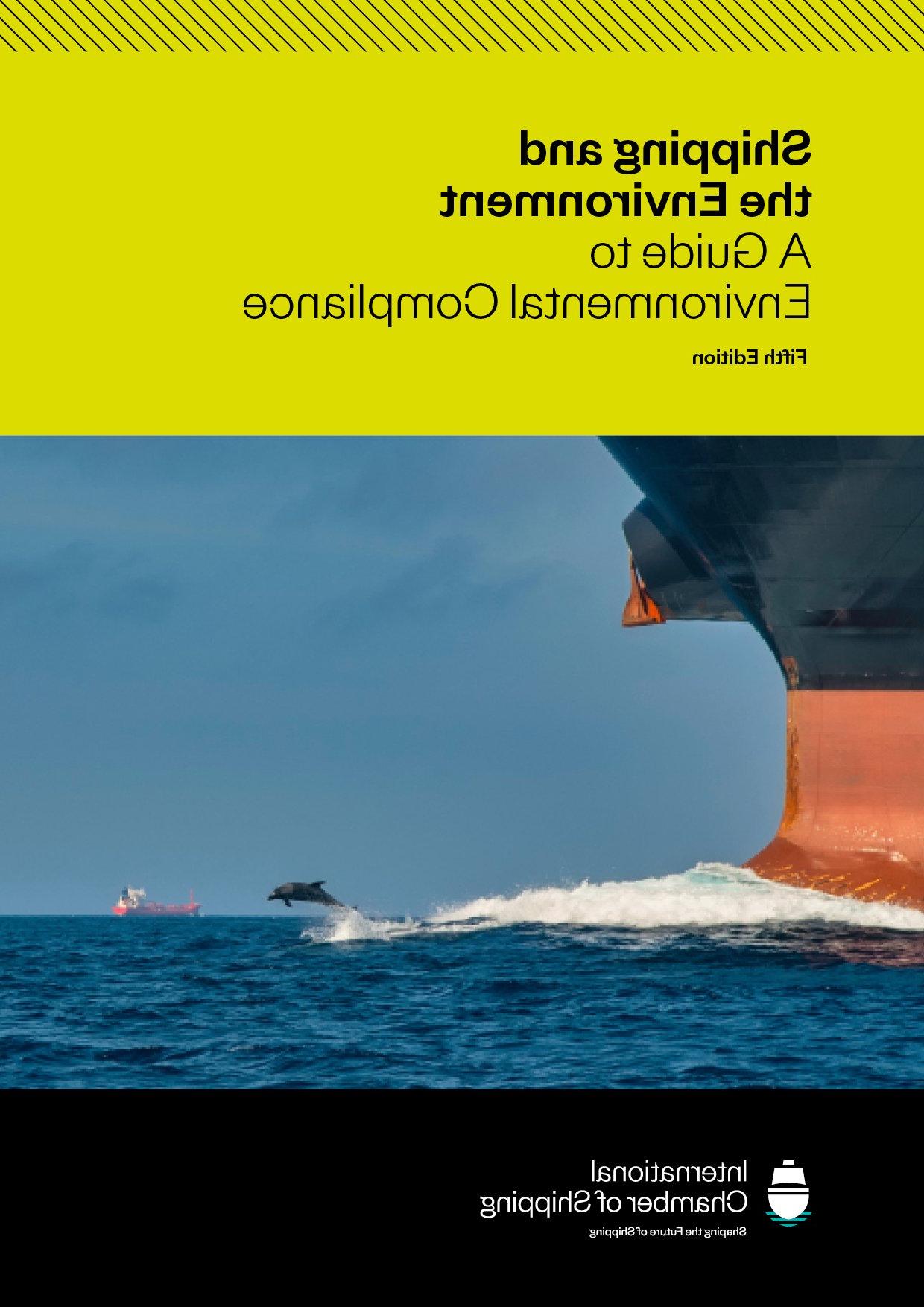现在有货
航运与环境:环境合规指南
£ 120
从替代燃料和推进系统, 通过节能措施, 向数字化和高效物流发展, 许多可能性正在涌现,使航运业成为一个更环保的行业. 航运与环境 gives shipping companies and seafarers a comprehensive entry point into the vast range of regulatory and operational considerations designed to reduce shipping’s environmental footprint, 包括:
- 与航运有关的主要环境议题;
- 管理它们的规则和制度;
- 如何处理海上和岸上的环境问题;
- 如何在海上和岸上进行改进; and
- 未来的发展.
This guide will help crew members understand the relationship between shipping and the environment, and the importance for everyone involved in shipping to respect the environment in their daily operations. Superintendents will benefit from a comprehensive overview of current and upcoming global regulatory framework, 包括MARPOL附则VI的最新更新, 引入欧盟排放交易体系, 以及影响全球航运的国家法规. Checklists are included to help shipping companies ensure the safety management system is in line with current environmental requirements, 所有船只都符合环境法规.
第五版以前一版的成功为基础, 航运与环境:业务守则,第四版这本书已经卖出了1万多本.
额外的信息
| 作者 | 大发黄金版网页版登录 |
| 出版商 | 国际航运协会Publications |
| 版 | 第五版 |
| 月出版 | 2024年4月 |
| 国际标准图书编号 | 978-1-913997-56-4 |
| 装船重量 | 1.000Kg |
资源
内容
1介绍 1.运输的作用和方式 1.2设计与搭建 (二)控制和减轻海洋污染风险 2.1什么是海洋污染? 2.2 .海洋污染的来源和影响 2.谁来制定环境保护法? 2.4 .海洋污染分类及相关法律 船公司和船上的最佳做法 3.1环境、社会和治理(ESG)声明 3.培训、意识和能力 3.符合ISM的环境标准 3.船上海洋污染应急计划 3.5船上文件 3.6技术设备 3.7油水分离器 3.8控制设备 3.9数字化选项 3.10压载水管理 3.11船体生物污染 3.12水下噪声 3.13一次性塑料 3.内部监测和报告环境遵守情况 3.15环境合规审计 3.环境不合规的外部报告 3.17商业元素 3.18航运融资 3.19个保险 3.20新增工具和指标 4未来发展 4.1替代燃料和推进方法 4.2绿色走廊 4.3灰水 4.4炭黑 4.5生物淤积 4.6造船 4.船舶技术、设计和建造 4.8 .海上碳捕获 4.9数字化转型 附录 |
前言
The world is better connected than ever before and 航运业 plays a fundamental role in linking nations. Some 11 billion tonnes of goods are transported by ship each year - representing more than 90% of the world’s trade - helping to house, 移动和喂养种群. 海运是对环境破坏最小的商业运输方式, 以每吨为基础,在运输部门具有最低的环境足迹. 航运的环境足迹包括一系列关键问题, from greenhouse gas emissions and air pollution to ensuring environmentally sound ship recycling. The global community needs to work together to tackle climate change and preserve the planet’s delicate ecosystems, and it is vital that 航运业 continues to play its part by further reducing its environmental footprint. 不过, 航运业, 和所有行业一样, has ambitious targets to reduce any negative environmental impact in line with global efforts to build a green and sustainable future for our planet. 作为全球监管机构, the International Maritime Organization (IMO) has been striving to reduce 航运业’s environmental impact for nearly 60 years, 该公司还将继续评估和减少该行业的环境足迹. 2008年,国际航运协会发布了 航运与环境:业务守则,第四版, which presented a comprehensive summary of the environmental obligations of shipping companies as required by international regulations and included a set of clear environmental standards by which shipping companies should operate. 自2008年以来, 全球和国家的环境法规数量迅速增长, and this new updated edition of 航运与环境 presents a much expanded and fully updated guide to help shipping companies keep on top of environmental compliance. 第五版解释说:
This guide gives crew members and shoreside staff an understanding of the relationship between shipping and the environment, and the importance for everyone involved in shipping to respect the environment in their daily operations. 从替代燃料和推进系统, 通过节能措施, 向数字化和高效物流发展, 许多可能性正在涌现,使航运业成为一个更环保的行业. Everyone working in the industry needs to understand the regulatory framework and the importance and application of these environmental regulations. This ICS publication also explores the institutions and organisations responsible for shaping and enforcing the regulations, 解释国际机构的作用, 国家当局和行业利益攸关方. Through the IMO, 航运业 has made a fundamental commitment to responsible practices. 作为政策制定者, 行业领导和团队, 我们都必须为大发黄金版网页版选择承担集体责任, 我们制定的法规和我们留下的遗产. 这第五版纳入并取代了ICSPublications 航运与环境:业务守则,第四版. |
介绍
1介绍 The shipping industry has long been aware of its impact on the environment and has sought to reduce the risks to the environment with regulations and industry best practice. The first environmental regulations for shipping focused on reducing the risk of oil pollution in the sea, but over the years regulations have extended to other forms of environmental protection, 例如,减少空气排放和控制航运垃圾. 超过90%的世界贸易是通过海运进行的, 海运是全球最环保的货物运输方式. Ships are critical for global trade, moving goods and people in a safe, economical and efficient way. The industry transports around 11 billion tonnes of cargo each year across oceans, rivers and seas. 没有航运, international trade such as the bulk transport of raw materials and the import/export of affordable food and manufactured goods would simply not be possible. 国际环保航运标准不断提高. 船舶与海洋环境相互作用, 因此,需要探索该行业的影响, 了解并设法防止对环境的污染和危害. With the rise of global supply chains there have been concerns about the impact on the environment. 海运是对环境破坏最小的商业运输方式, 与陆基工业相比, 人类活动对污染的贡献相对较小吗. Shipping is constantly adapting to ensure that the seas are looked after as an integral part of how the industry operates and delivers for society, 货主和承租人. 了解并响应限制环境影响的需要, 海运业, 通过国际海事组织(IMO), 一直致力于确保减少污染的影响. 1.运输的作用和方式 1.1.1全球供应链 航运对全球供应链的运作至关重要, 为企业提供具有成本效益的能力, 高效、安全地在全球范围内运输大量货物和材料. 全球供应链是采购和供应实物商品的网络, 在全球化的经济中,这些网络跨越了各大洲. A supply chain involves a series of steps involved in delivering a product to the customer, 包括将原材料转移和转化为成品, 运输这些产品, 然后分发给终端用户. 1.1.2全球船队 2021年,全球船队总数达到99艘,100总吨及以上商船800艘, 相当于容量为2.130亿载重吨(dwt). 中国, 日本 and 希腊 remain the top three ship-owning countries in terms of cargo-carrying capacity, 占全球吨位的41%. 图1.1 presents a breakdown of the types of ship in the global fleet in order of dead weight tonnage. (图1.1 .船舶种类及其贸易] 资料来源:贸发会议根据克拉克森研究公司的数据计算. 1.2设计与搭建 当船被建造时,它必须遵守规则, technical standards and regulations set by both the classification society (see section 2.3.6:船级)和船旗国(见第2节).3.3:船旗国). When regulations are brought into effect, these may affect existing ships as well as new ships. 从规划和建设, 在其整个交易周期中, 然后是回收飞船, the environmental impact of the ship is a constant consideration for all those involved. 一旦船主决定建造一艘船, 然后船级社(通常称为船级社)确保设计, 规划和施工符合批准的标准. 1.2.1船舶生命周期内的船舶操作 (图1.[2]船舶的生命周期 Most ships are built in Asia and are recycled in the 印度n sub-continent or South East Asia. 在一艘船的整个生命周期中,它们可能会在世界范围内进行贸易. Flag state and class will continue to check the ship through its life cycle to ensure it is continually certified and complies with relevant laws, 包括确保它符合环境要求. 干船坞大约每五年进行一次, 一些船型需要更频繁地干船坞. 船舶将在干船坞进行检验. Port state control will check visiting ships to ensure that they are compliant with international laws. 要了解更多信息,请参见第2节.3.4:港口国控制. |


